Author: Brian Hall
A hallmark of New England IPA is its smooth drinkability and creamy mouthfeel, which many view as being the main characteristic that separates a good version from poor examples as well as other variants of IPA. One of the most common adjuncts used for this purpose is oats, a cereal grain rich in beta-glucans that increase the viscosity beer, ostensibly contributing increased body and a silky smooth texture.
Oats are available in various forms– whole, steel cut, flaked, and malted. Whereas whole and steel cut oats require a cereal mash, flaked and malted oats can be added directly to the mash because their sugars have been made easily accessible by the flaking and malting process, making them more appealing to many brewers. When it comes to NEIPA, recipes often call for the use of 15-30% oats, and while it seems flaked oats receive the most attention, some brewers have reported positive results with oat malt.
I’ve enjoyed brewing many variations of NEIPA over the last few years, experimenting with different hop combinations and yeast strains, though I’ve tended to rely largely on flaked oats. While I’ve been pleased with the beers I’ve made, I was curious what I might be missing and sought out a bag of oat malt so that I could test it out for myself!
| PURPOSE |
To evaluate the difference between a NEIPA made with flaked oats and one made with the same proportion of malted oats.
| METHODS |
The recipe I designed for this xBmt was quite simple, my hope being to allow any differences to shine through.
OpAciTy²
Recipe Details
| Batch Size | Boil Time | IBU | SRM | Est. OG | Est. FG | ABV |
|---|---|---|---|---|---|---|
| 5.5 gal | 60 min | 29.2 IBUs | 5.8 SRM | 1.061 | 1.015 | 6.1 % |
| Actuals | 1.061 | 1.013 | 6.4 % | |||
Fermentables
| Name | Amount | % |
|---|---|---|
| Lamonta American Style Pale Malt (Mecca Grade) | 9.003 lbs | 67.93 |
| Oats, Malted (Thomas Fawcett) | 3 lbs | 22.64 |
| Vanora Vienna-style Malt (Mecca Grade) | 1.25 lbs | 9.43 |
Hops
| Name | Amount | Time | Use | Form | Alpha % |
|---|---|---|---|---|---|
| Magnum | 7.1 g | 60 min | Boil | Pellet | 12 |
| Citra | 28.3 g | 5 min | Boil | Pellet | 12 |
| El Dorado | 21.3 g | 5 min | Boil | Pellet | 15 |
| Mosaic (HBC 369) | 7.1 g | 5 min | Boil | Pellet | 12.3 |
| El Dorado | 42.5 g | 1 min | Boil | Pellet | 15 |
| Citra | 42.5 g | 0 min | Boil | Pellet | 12 |
| Mosaic (HBC 369) | 14.2 g | 0 min | Boil | Pellet | 12.3 |
| Citra | 21 g | 7 days | Dry Hop | Pellet | 12 |
| El Dorado | 21 g | 7 days | Dry Hop | Pellet | 15 |
| Mosaic (HBC 369) | 7 g | 7 days | Dry Hop | Pellet | 12.3 |
| Citra | 28 g | 3 days | Dry Hop | Pellet | 12 |
| El Dorado | 21 g | 3 days | Dry Hop | Pellet | 15 |
| Mosaic (HBC 369) | 7 g | 3 days | Dry Hop | Pellet | 12.3 |
Notes
| Water Profile: Ca 117 | Mg 3 | Na 10 | SO4 84 | Cl 168 |
Download
| Download this recipe's BeerXML file |
I started my brew day by collecting the full volume of water for both batches through my RO filter, adjusting it to my desired profile, then using my heat stick to bring it to strike temperature.

While the water was heating up, I weighed out and milled the grains for each batch, though held off on milling the flaked oats.
When the water was adequately heated, I split it between identical kettles and mashed in on the flaked oats batch about 10 minutes before the malted oats batch, which I held at strike temperature with my heat stick. After fully incorporating the grains, I measured the mash temperature.
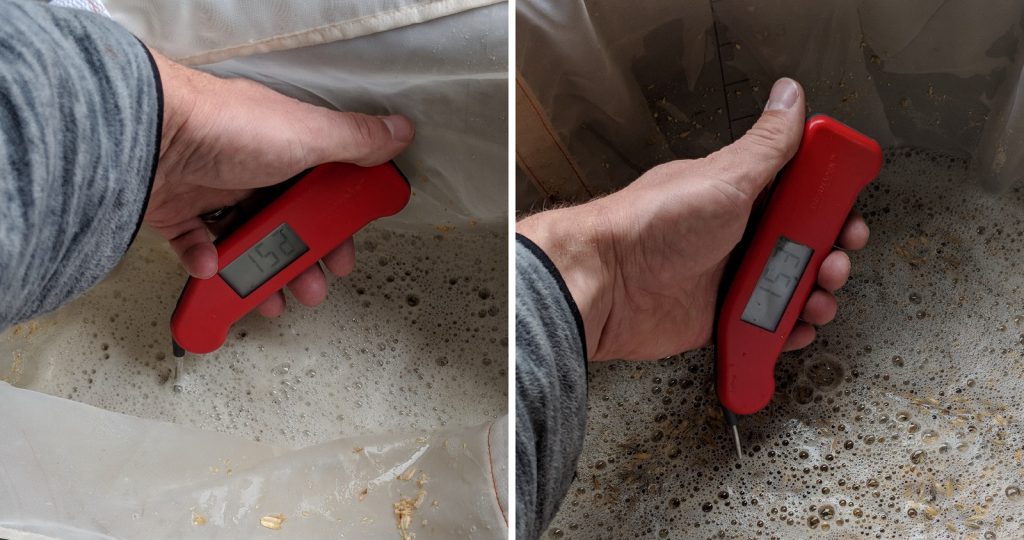
I measured out the kettle hop additions for both batches during the mash rest.
Once the 60 minute mash rests were finished, I removed the bags and brought the worts to a boil, adding hops as stated in the recipe.
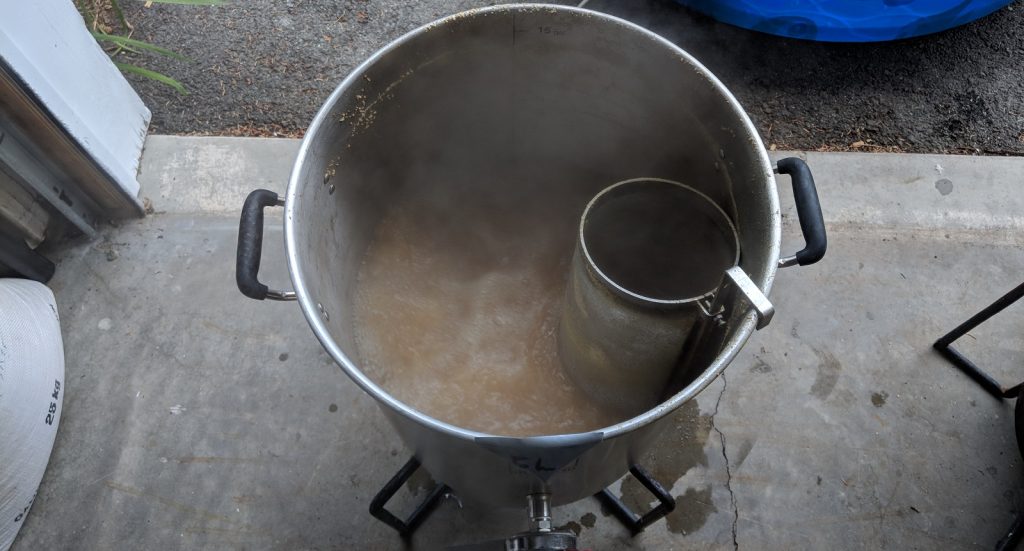
At the completion of each 60 minute boil, I quickly chilled the worts with my immersion chiller before taking hydrometer measurements that revealed an early difference between the batches.
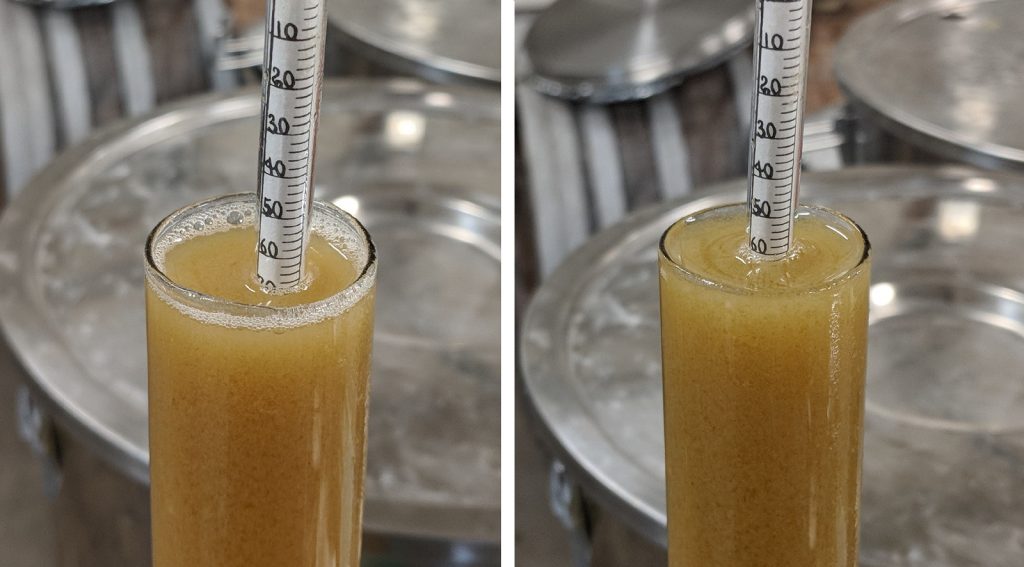
I racked equal volumes of wort to separate sanitized Brew Buckets then direct pitched a pouch of Imperial Yeast A38 Juice into each one.
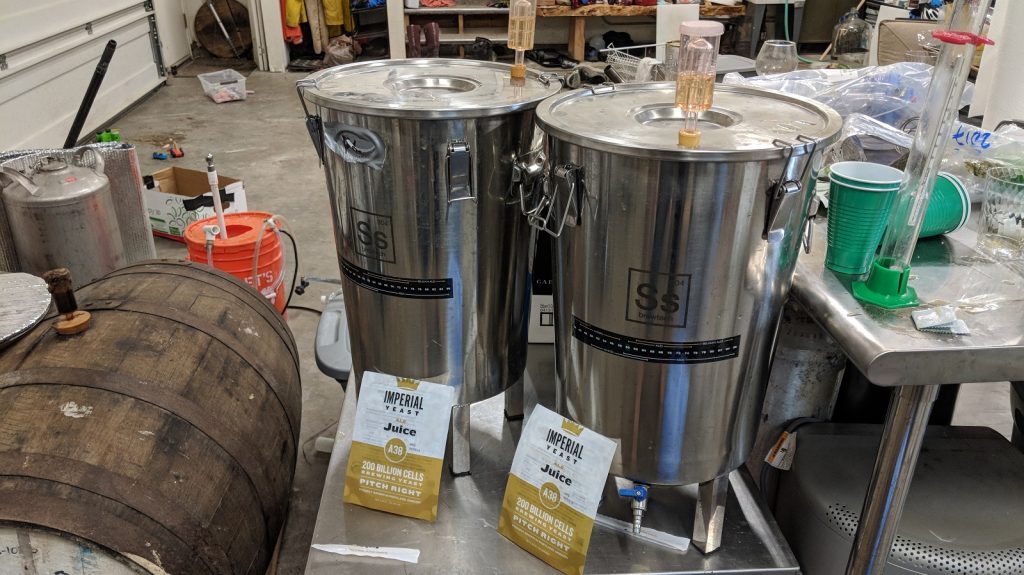
I then hit both worts with an equal dose of pure oxygen.
The worts were left to ferment at 66°F/19°C for a few days before I added the dry hop additions. With signs of fermentation absent 8 days post-pitch, I took hydrometer measurements showing differences in FG.
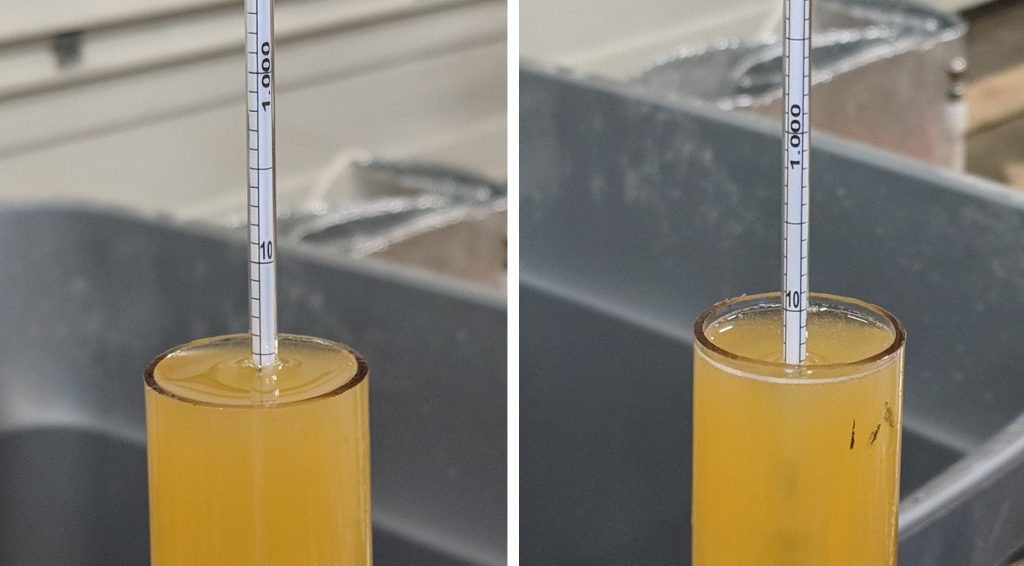
I prepared for packaging by purging kegs of oxygen.
I then kegged the beers under pressure to avoid the negative effects of cold-side oxidation.
The kegs were then placed in my cool keezer and burst carbonated. After a few days of cold conditioning, they were ready to serve to participants.
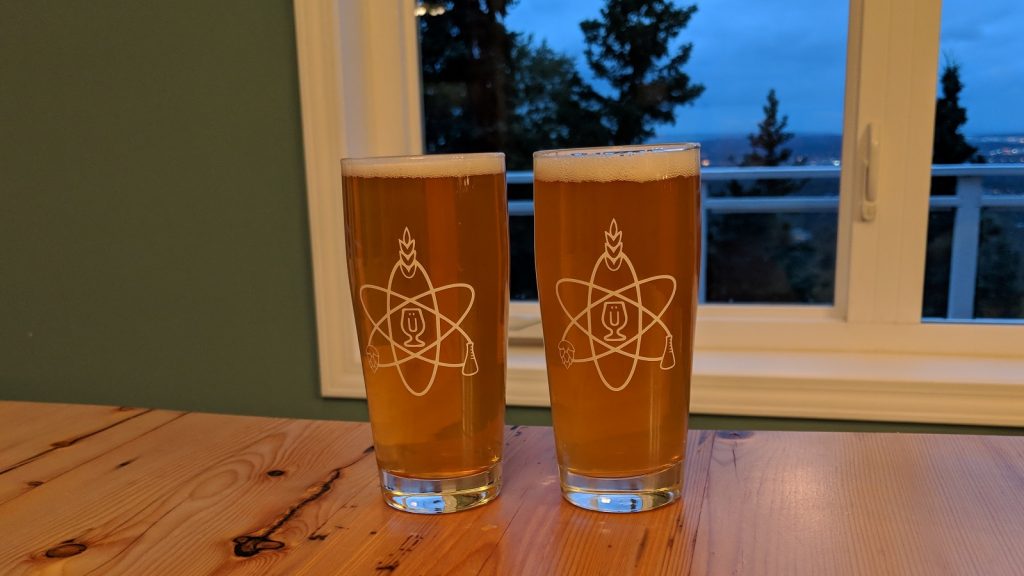
| RESULTS |
A total of 21 people of varying levels of experience participated in this xBmt. Each participant was served 1 sample of the beer made with flaked oats and 2 samples of the one made with oat malt then asked to identify the sample that was unique. At this sample size, 12 tasters (p<0.05) would have had to correctly identify the flaked oats beer as being different in order to reach statistical significance. In the end, only 7 tasters (p=0.58) accurately identified the unique sample, indicating participants in this xBmt were unable to reliably distinguish a NEIPA made with flaked oats from one made with the same amount of oat malt.
My Impressions: This isn’t modest, but having brewed a lot of NEIPA successfully, it was no surprise to me this beer came back delightfully delicious. I’m not a huge mosaic fan, so I suspect I’d like it even more without the addition, but I’m slowly trying to work my way through a pound of it. I recently did this exact same batch with just Citra and Enigma and found it to be the best NEIPA I’ve brewed to date: bottom line, this recipe is a keeper. However, despite my own knowledge of the variable, and the notion in my head the malted oats beer might be somewhat smoother… I was still unable to isolate the odd beer out.
|DISCUSSION |
Flaked and malted oats are used regularly by brewers, though the former seems to have gained popularity among those crafting lusciously hazy NEIPA. The process used to produce both is certainly unique and results in a different product– whereas flaked oats are flattened between hot rollers that expose the starchy endosperm and denatures enzymes, malted oats retain enzymes while also possessing sugars and starches. While these differences might be presumed to lead to a perceptible impact, the fact tasters in this xBmt were unable to reliably tell apart a NEIPA made with flaked oats from one made with an equal proportion of malted oats suggests otherwise.
Even with the apparent lack of a perceptible difference, there was some objectively observable between-batch variation. I’m not entirely sure why the flaked oats wort clocked in at 0.007 SG points higher than the one made with malted oats, but given their characteristic similarities, I’m inclined to use flaked over malted oats because it’s quite a bit cheaper and easier to find. It should be noted that, despite the disparity in OG, the apparent attenuation of both batches was 78%, resulting in beers that had a 0.4% difference in ABV. Finally, the the malted oats beer maintained slightly more haze than the beer made with flaked oats, which I thought was curious given the malting process reduces starch content.
While I’m definitely not ready to hang up my hat on the idea that adjunct malts are unneeded for this particular style, I’d have to say the non-significant results of past xBmts on adjunct grain usage in NEIPA are making me wary of how critical this ingredient is. Perhaps this style is really the sum of many small parts that work together to create liquid perfection, and I look forward to continued exploration!
If you have any thoughts about this xBmt, please do not hesitate to share in the comments section below!
Support Brülosophy In Style!
All designs are available in various colors and sizes on Amazon!
Follow Brülosophy on:
FACEBOOK | TWITTER | INSTAGRAM
If you enjoy this stuff and feel compelled to support Brulosophy.com, please check out the Support page for details on how you can very easily do so. Thanks!


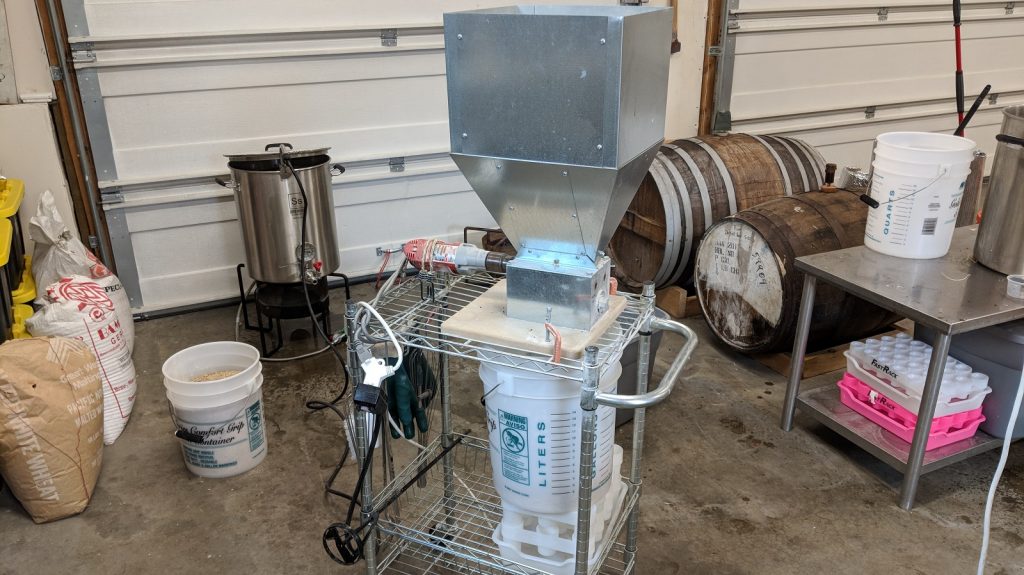
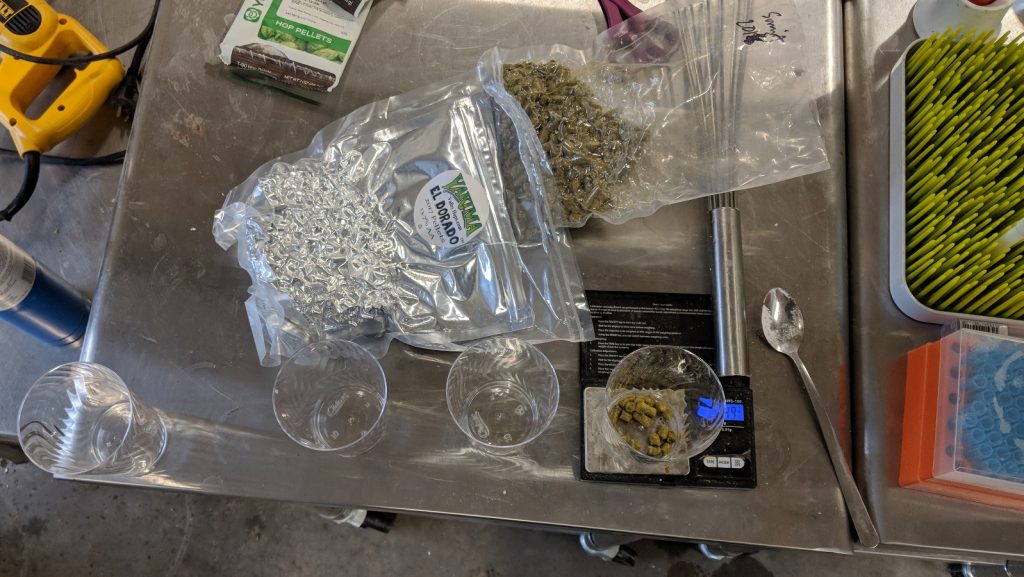
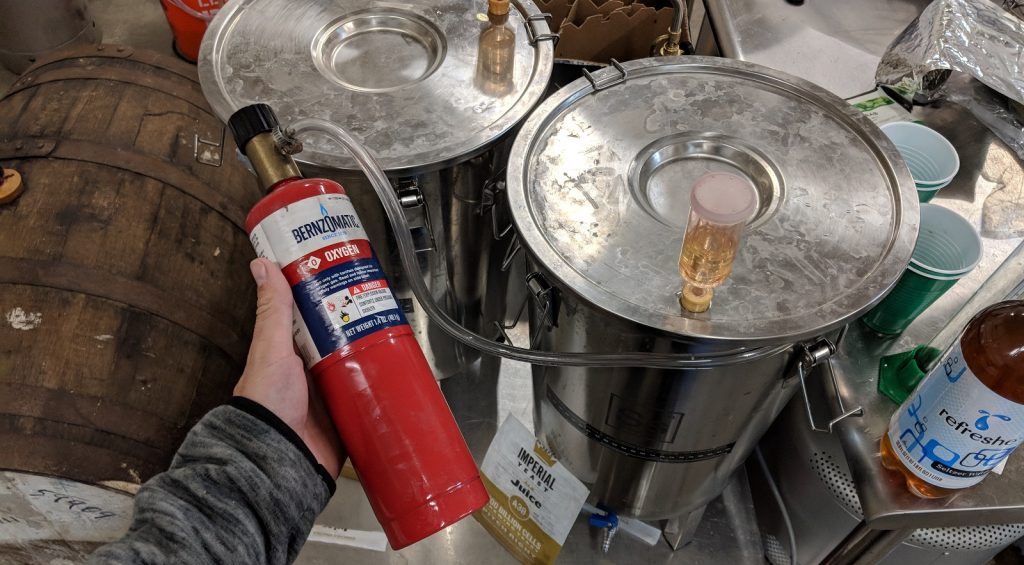
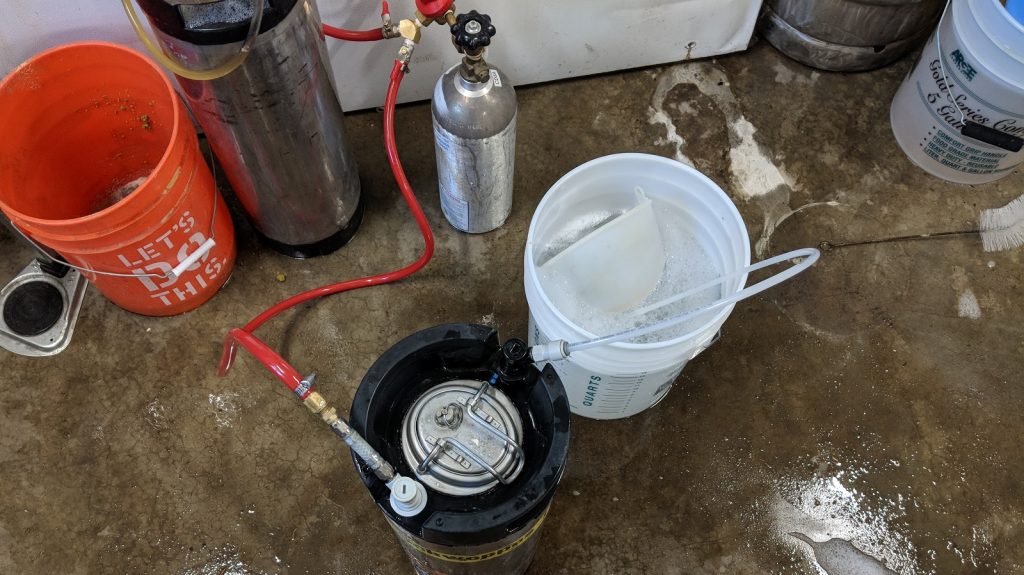
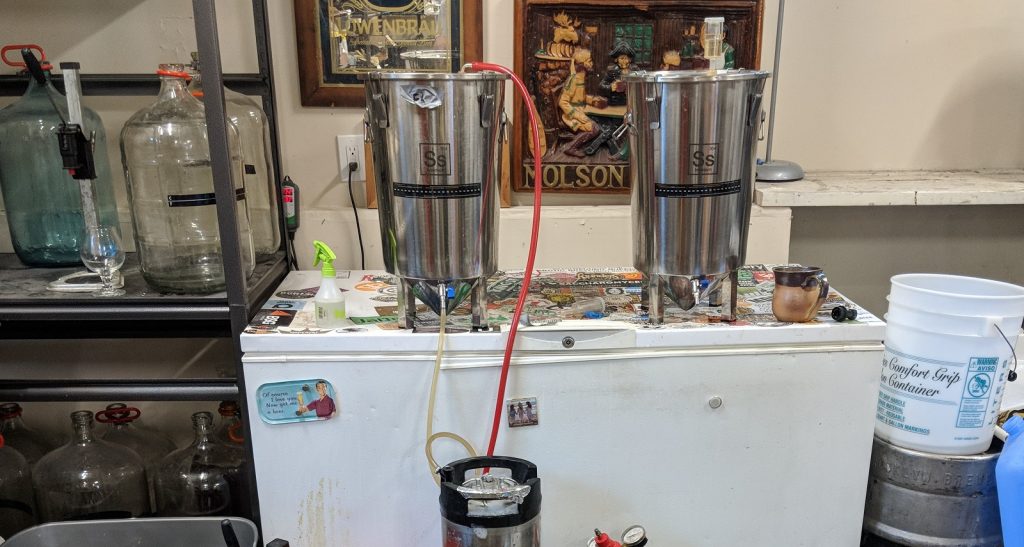










26 thoughts on “exBEERiment | Flaked vs. Malted Oats In A Hazy IPA”
Always so interesting! Thanks guys.
You twice write wheat malt instead of malted oats. I assume this is a type-O.
In the Results summary.
Hi nice experiment!
You write: “I recently did this exact same batch with just Citra and Enigma and found it to be the best NEIPA I’ve brewed to date: bottom line, this recipe is a keeper.”……….so is thie psoted one the best or tjhe one with Citra+Enigma…..can be just me being Danish, but Iam confused 🙂
Keep it up!
Just wondering is there a reason why you take a temp reading when you have a thermometer on your kettles?is this because of heat pockets?
Those kettle thermometers aren’t as accurate as the Thermapens, plus our goal is to keep things between batches as consistent as possible to isolate whatever variable we’re testing.
Yeah I learned that my last batch when my temp was going down so I turned my heat on low and out of nowhere my temp spiked 30 degrees,ouch!so thanks for the great idea I’m gona use this as a learning experience lol
I think NEIPAs have so much flavour you could piss in one and nobody would notice the difference
I agree with Bill on this. My first beer I ever brewed was a NEIPA this summer. It is one of the best beers I’ve ever had in my life and I’ve had A LOT of beers in my 10 years of operating a tavern specializing in European and Craft beers. Interestingly enough, when I dropped the yeast out of the bottom of my fermenter on an 11 gallon batch, I forgot to remove the blow off hose I had sitting in a Mason jar of sterile vodka and distilled water. The opening of the trub valve caused a vacuum sucking about a cup of the vodka water into my 11 gallon batch. Results ? Nobody knew but me and everyone was adamant that it was one of the best beers they’d ever tasted in their lives.
How was the crush with the malted oats? Oat kernels are much smaller than barley, and usually require adjusting your mill. If most of the malted oats passed through your mill intact, that could explain the lower SG.
At my LHBS, I have to pass malted oats through the mill at least 2 times separately to properly crack and expose the kernel prior to milling with the remainder of the grain; granted, I can’t change the gap width on their mills. On another note, the plentiful husk from malted oats has always provided for a quick lauter and sparge, which makes me continually choose the malted over the flaked.
The difference in OG and haze is probably due to the fact that oat is a long, skinny grain with a thick, almost woody husk. Pound for pound, malted oats have less endosperm and much more husk (and hence polyphenols) than malted barley, and about half the endosperm of flaked oats. Even if the malted oats were properly milled, you’ll still get less extract compared to an equal amount of either malted barley or flaked oats. Good experiment, thanks.
Thanks. I was wondering about the OG difference. Makes total sense.
Crisp Naked Oat Malt has no husk https://crispmalt.com/malts/naked-oat-malt/
Like some other commenters, my main man at my LHBS has me send malted oats through the mill at least twice, although three times is better.
I used malted oats in a hazy IPA for the first time a few months back, now I put them in damned near everything.
PS… What kinda crazy person doesn’t like Mosaic? O.o
It would be also interesting an experiment brewing witbier using malted x unmalted wheat. Heve you ever done?
I always pass Thomas Fawcett oat malt (and Golden Naked oats) through my mill once by itself then again mixed with the rest of my malt. This I get much better extraction than if done just once as others have already stated.
I’m curious as to how you go about pressure transferring your beer from the brew bucket. Two questions: a.) is your gas line just sqeezed onto the barb of a 90 degree elbow on the lid? b.) how do you not over fill your keg?
Awesome recipe! I always use flaked oats when brewing, because that is how the shop gives them to me. My question is, would this hop combo hide the off-flavor of marijuana when added to the beer? I am trying to make a marijuana beer without having it taste like hot skunk darts. Any suggestions?
a brewery near me that has one of those neipas with a light oaty flavor replied to my info request. i’ve never been able to get that flavor with flaked, malted or golden naked oats. he said to use malted oats. here are his comments:
“We don’t go much into the specifics of our recipes but looking at what you have tried and knowing our recipe we used malted oats, you can up your adjunct percent higher than 20 if you want to get additional oat flavor, ours was for that specific recipe, although we use a lot of different variations. Also look to grind the malted oat finer and use a lot of rice hills for filtration.”
Hi, maybe you don’t know the article from Scott Janish, have a look, some very interesting things on flaked oats
http://scottjanish.com/case-brewing-oats/
would have liked to have seen a photo of both types of oats used
I haven’t used enigma hops yet. How do you use with Citra?
Late reply but for anyone else here is the link. Citra/ enigma made a great beer. https://brulosophy.com/2019/01/07/the-impact-of-delaying-yeast-pitch-exbeeriment-results/
These are pretty clear to be called NEIPA of hazy IPA. Have you done experiments with different variables to try and get your hazy beers Hazy?